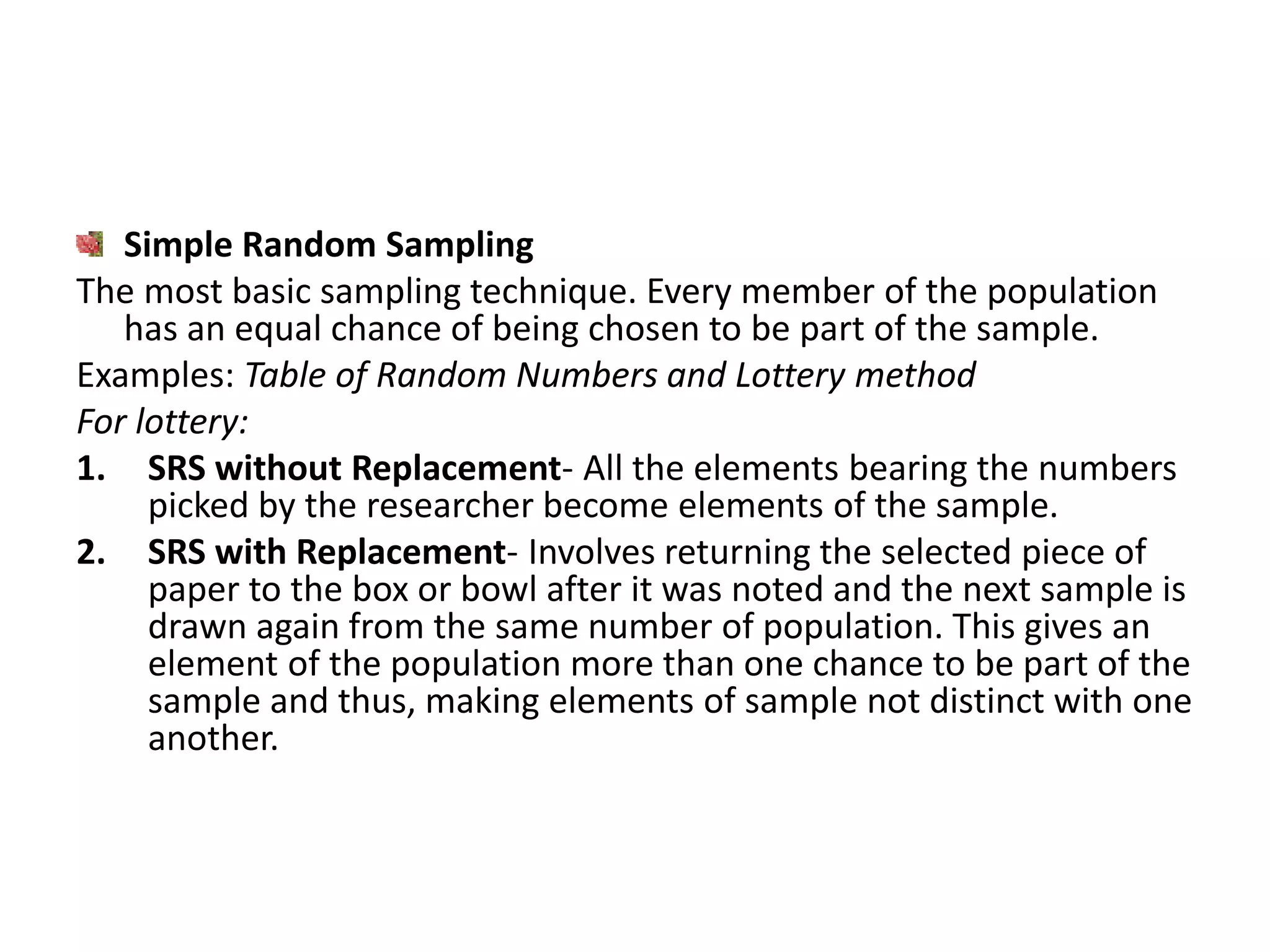The document outlines various random sampling techniques essential for achieving unbiased results in research, including simple random sampling, systematic sampling, stratified sampling, and cluster sampling. Detailed examples illustrate the application of each technique, demonstrating processes for sample selection and the calculations involved. It emphasizes the importance of randomization in various contexts to ensure representative samples.


























